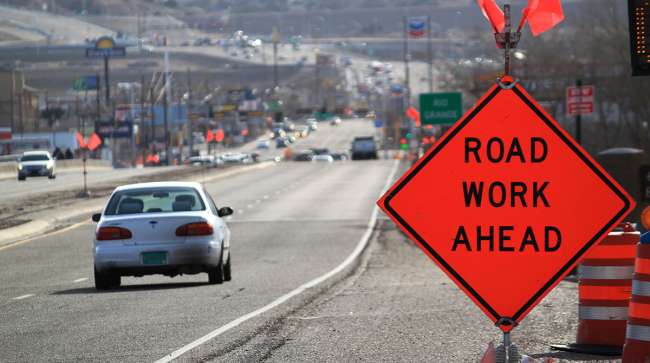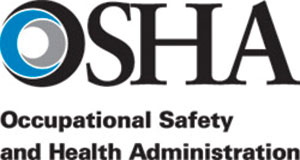New Mexico Committed to Reversing Trend of Workplace Fatalities

In 2016, the most recent year for which comprehensive data is available nationally, 41 individuals were killed in work-related incidents in New Mexico. Among those episodes, according to reports filed with the federal Occupational Safety and Health Administration:
•A worker at a wastewater treatment plant stepped onto an unstable grate and either fell into or was sucked into a well filled with sludge, and subsequently asphyxiated.
• In the process of searching for tie-down straps, a trucking company employee climbed on top of a stack of three steel structures. The stack collapsed, and the employee’s chest was crushed by 800 pounds of steel.
• A construction worker was operating an excavator as part of a project to demolish a concrete overpass. His radio receiver fell onto the floor of the vehicle, and when the individual went to retrieve it, the wire of the receiver became entangled with the excavator’s joystick. The excavator spun out of control and fell off the overpass, and the worker was killed when he was thrown against the windshield.
Federal data show that New Mexico ranks No. 36 nationally when it comes to the rate of fatalities per 100,000 workers (the greater the rank, the worse the fatality rate). And while the ranking reflects an improvement in one sense — in previous years, New Mexico has been cited as one of the most dangerous places in the country in which to work — there were six more deaths here in 2016 than in 2015, and on-the-job fatalities have risen nationally.

Robert Genoway, head of New Mexico’s Occupational Health and Safety Bureau, said the state typically has between 35 and 55 work-related fatalities annually. Because New Mexico has a relatively small population and workforce, small fluctuations can create a high statistical variance, and Genoway said he did not believe the year-over-year increase was indicative of a larger trend.
Still, any workplace fatality is a cause for concern, and Genoway said his agency is committed to “preventing accidents before they occur, in part by targeting industries for enforcement and cooperation where it’s going to be most effective.”
According to Genoway, that means working closely with the construction and oil and gas industries, where historically about two-thirds of all New Mexico workplace fatalities have occurred. Illnesses and injuries are primarily concentrated in manufacturing, particularly metal fabrication, as well as those who are employed by the health care industry.
Besides the human price of such incidents, injuries and illnesses are estimated to cost businesses, the government and individuals $250 billion to $360 billion nationally each year, according to a 2018 report from the AFL-CIO, the country’s largest federation of labor unions.
Approaching Safety
Online insurance company TermLife2Go recently named construction the most dangerous job in New Mexico, accounting for nine of the 41 occupational deaths in 2016. Federal statistics show that mining, quarrying, oil and gas extraction occupations have a higher rate of fatalities as a proportion of the New Mexico workforce employed in that industry, but it is construction occupations that account for the bulk of the total fatalities for the state.
The subject is one Cameron Potter, safety director at Albuquerque-based HB Construction, said he thinks a lot about. HB has won several accolades for its approach to safety over the past few years.
“Everyone says that safety is a priority, but it’s something we really do stress often, in part because we’re a general contractor,” said Potter.
About 90% of the company’s on-site work revolves around managing other contractors or subcontractors and all the liability that comes with that, according to Potter. He said it’s not atypical for a group of four or five HB Construction employees to be in charge of 50 to 100 individuals at a job site.
So how does the company manage safety in light of that structure?
First, Potter said HB Construction has recognized that investing in safety is a necessity. The company currently has six safety department employees in an organization with about 180 total, whereas Potter says the industry standard for a company of that size is one or two.
Secondly, HB Construction has partnered with the state OSHA to implement standards more rigorous than those required by federal regulations, including those around drug and alcohol testing. Potter said OSHA representatives regularly visit the company and vice versa.
Finally, there’s the company’s use of technology to predict safety issues before they happen. Potter said HB Construction’s modeling department will typically create a 3D version of a project that the safety department reviews for potential dangers. In some cases, the design will be modified to circumvent those issues, such as the case of a roof line that was changed in order to limit workers’ exposure to fall hazards during construction.
“We were able to take care of it before the steel for this part of the project was manufactured,” he said.
According to Potter, among the most common safety issues on a construction site are falls from ladders and other heights as well as electrical problems.
But not all hazards are visible in a 3D model or even on site.
Danger on the road
“I know the construction sites look extremely dangerous, but something really challenging the industry in general right now is vehicular accidents,” said Potter.
That’s true in New Mexico, where the slow post-recession recovery of the industry has forced construction companies, their employees and subcontractors to travel farther for work. Potter said commutes can be as long as 6½ hours to a remote location, and those places often are 30 minutes to one hour away from medical, fire and law enforcement services.
Construction isn’t the only New Mexico industry grappling with the issue of vehicular accidents. Genoway said 60% of all occupational fatalities in the state — nearly the same proportion of deaths from the construction and oil and gas industries combined — can be attributed to road accidents across all sectors.
“Everything else pales in comparison,” Genoway said.
He said part of the issue is New Mexico’s relatively large geographic size, creating longer drives for those workers whose occupations require it and more opportunities for accidents (though accidents that occur on commutes to and from work generally are not considered work-related). His agency is heavily involved with outreach and training around vehicular safety issues, though enforcement and investigation of road accidents generally falls to local law enforcement.
At HB Construction, Potter said the company offers regular defensive-driving courses and will continue to focus on vehicular safety as the company grows.
“We have a lot more data now,” he said, “and the industry is finally beginning to realize it’s a big issue.”
Distributed by Tribune Content Agency, LLC


